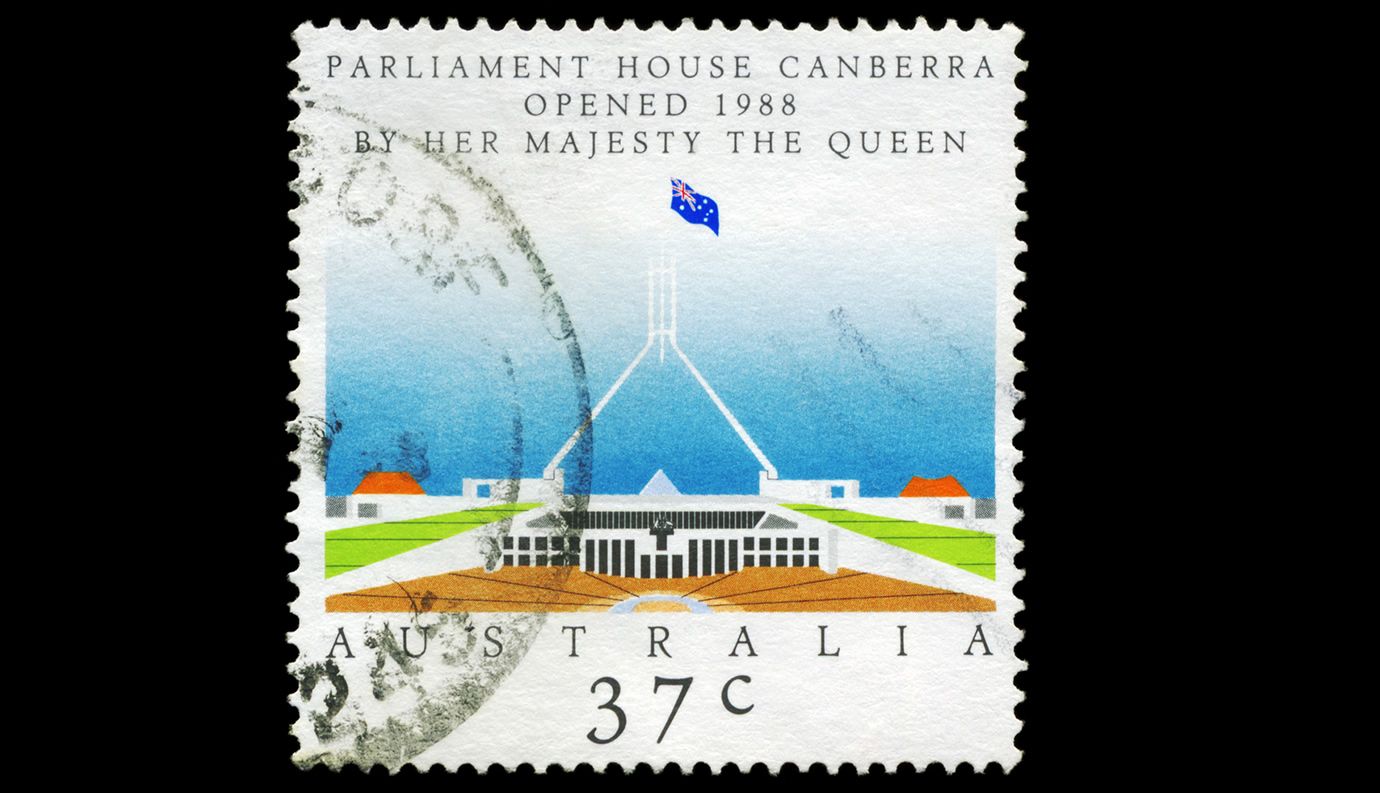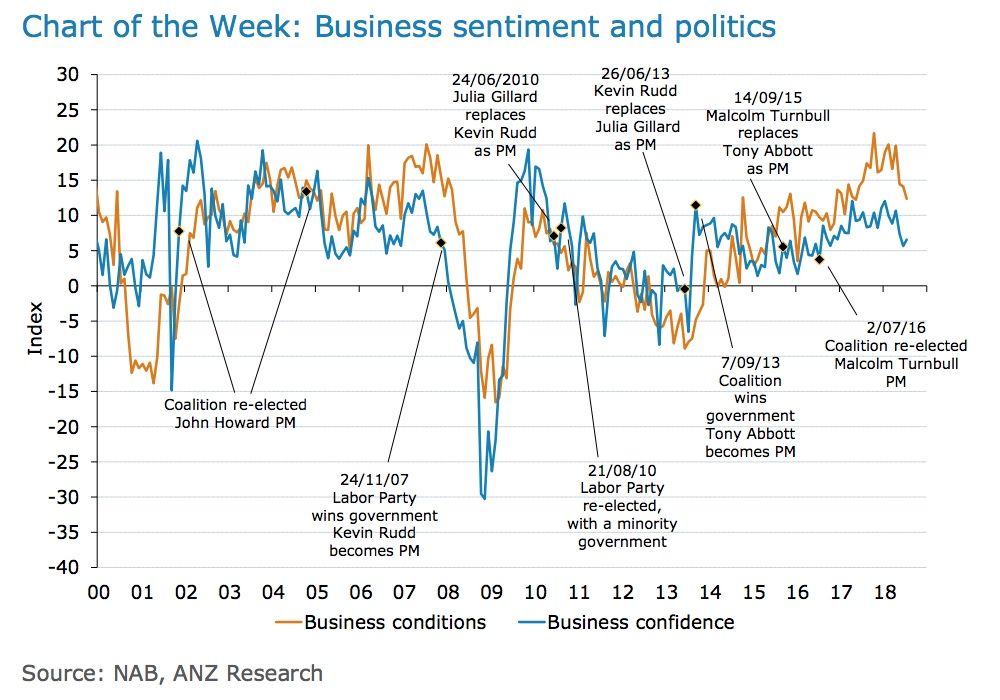Australian Dollar Turns Back to Fundamentals now Canberra Intrigue is Fading
- Written by: Gary Howes

Image © Alexander Zam, Adobe Stock
- New poll shows ruling coalition in setback from recent infighting
- Fragile political backdrop could weigh on AUD near-term
- Analysts agree fundamentals will return to the driving seat, differ on what this actually poses
With the new Australian Prime Minister Scott Morrison having filled most of the cabinet roles, attention should turn back to economics, commodities and global investor sentiment as the main driver of AUD this week.
We note that with a NAFTA deal being struck between the US and Mexico the overall sentiment on markets is positive, which tends to benefit the Aussie Dollar.
The Pound-to-Australian Dollar exchange rate trades at 1.7527 at the mid-week point, largely unchanged from where it has traded all week. The Aussie-to-US Dollar rate meanwhile trades at 0.7342, close to the current week's high at 0.7349.
The currency appears to be in a consolidative phase, following the apparent positive reaction to the change in Prime Minister in the previous week.
Malcolm Turnbull resigned last Friday as his Liberal party felt their opportunities for electoral success under his banner were fast fading; the resignation resulted in a leadership contest that saw Treasurer Scott Morrison best Home Affairs Minister Peter Dutton for the role.
Morrison is Australia's sixth leader in ten years ensuring a decade of churn at the top of Australian politics continues. Gone are the days of near-ten-year tenures of the likes of John Howard, Paul Keating and Bob Hawke.
"While the AUD saw a knee-jerk move higher on Morrison's appointment, the fragile political backdrop still remains a cause of concern," warns foreign exchange analyst Viraj Patel with ING Bank N.V. in London.
Indeed, The ruling Liberal-National coalition’s primary vote dropped four points to 33% according to a new poll, suggesting the political shenanigans at the top have not gone down well with the electorate.
The two-party-preferred split between the opposition Labor party and the coalition blew out from 51-49 in favour of Labor two weeks ago to 56-44, which would translate into a heavy election defeat.
Research from Australian lender ANZ meanwhile suggests there is some evidence that businesses are reacting negatively to political uncertainty.
ANZ note that after showing remarkable stability in the face of falling house prices and rising global trade tension, ANZ Roy-Morgan Australian Consumer Confidence fell sharply last weekend – "something we blamed on political uncertainty," says David Plank, Head of Australian Economics at ANZ.
As far as business sentiment is concerned, Plank does however note there is no clear link between politics and the more important measure of business conditions.
"What’s more, we think after a decade of political volatility businesses have very low expectations about goings on in Canberra. So we don’t think it inevitable that this week’s events will have a measurable impact on the economy, but we will certainly be watching for evidence to contrary," says Plank.
Indeed, Morrison Morrison, a Turnbull supporter, could be the continuity candidate despite promised a new generation of leadership, and an end to political infighting.
“Australians expect that of their parliament and I’m pleased that’s the case,” Morrison told reporters when asked about comments from former Prime Minister Tony Abbott, a leader of the conservative faction that ousted Turnbull, that the “era of the political assassin is over.”
The verdict on potential AUD trajectory in the wake of recent political developments is therefore yet to be delivered and markets will be looking for any radical shifts in policy before pushing the currency in a decisive move.
Indeed, analysts at another major Aussie lender are more sanguine as to the Australian Dollar's path going forward, noting that while churn at the top of Australian politics does inject some instability, the overall trajectory of policy remains in place.
"Now that Canberra’s political intrigue has been settled, we expect the fundamentals of commodity prices and interest rates to again be the major driver of AUD," says Joseph Capurso, Senior Currency Strategist with the Commonwealth Bank of Australia.
At the time of writing the Pound-to-Australian Dollar trades at 1.7565 with the Aussie maintaining the gains made in the wake of the Morrison victory and we note technical studies point to the potential for further losses.
The AUD/USD exchange rate meanwhile trades at 0.7345, largely unchanged on the previous day's close.
Advertisement
Get up to 5% more foreign exchange for international payments by using a specialist provider to get closer to the real market rate and avoid the gaping spreads charged by your bank when providing currency. Learn more here
Fundamentals Might not be so Supportive
If its back to business-as-usual for the Australian Dollar, then developments in the domestic economy and international sentiment pertaining to trade will matter. Specifically, developments in the Chinese economy and Chinese trade relations with the rest of the world will matter.
Here CBA's Capurso is optimistic:
"The softness in the Chinese economy suggests some more downside to commodity prices and AUD. But we do not expect an extended period of weakness because the Chinese authorities are inching closer to providing support to the economy via increased infrastructure spending, and easier access to borrowing."
ING agree that domestic and global trade dynamics will once again be central to the Australian Dollar narrative. However, ING don't quite share the same optimistic slant that CBA do.
ING's Rob Carnell notes there are other reasons to expect some medium-term weakness in the AUD particularly because he isn't convinced that the economy is in as good shape as the popular view on Australia runs.
"An absence of RBA policy changes over recent years has allowed household debt to balloon," adds ING's Patel. "Meanwhile, the property market across almost the entire country is beginning to cool, and we doubt an about-face in lending standards by APRA will be sufficient, or fast enough to turn it around."
Based on this, ING are inclined to say that AUD/USD will see greater risks of running down to 0.70, rather than recovering above 0.75.
"Although this will also depend on the broader global economic outlook and USD profile," cautions Patel.
Advertisement
Get up to 5% more foreign exchange for international payments by using a specialist provider to get closer to the real market rate and avoid the gaping spreads charged by your bank when providing currency. Learn more here





